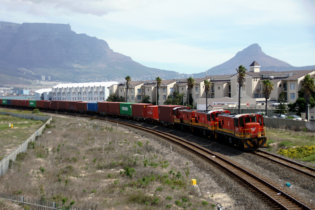UD Trucks is celebrating its 80th birthday this year.
Kenzo Adachi founded Nihon Diesel Industries back in December 1935. The company is credited with developing the first Japanese-made diesel truck engine in 1938, followed by the first Japanese-made diesel truck, the LD 1, in November 1939. The story goes that Adachi himself took the LD 1 on a test drive of 3 000 km, later that year. Although Japan’s roads at the time were unpaved and the country was full of narrow roads and bridges, it was said that not a single bolt or spring came loose on that maiden journey. At the start of the 1950s, construction of infrastructure led to rising demand for large, high-horsepower trucks. In January 1955, two new diesel engines were released by the company: the three-cylinder 110 hp UD 3 and the four-cylinder 150 hp UD 4. The six-cylinder 230 hp UD 6, launched in June that year, was reported to be the most powerful engine in Japan at the time, as well as the lightest, per horsepower, in the world. The engines used ‘uniflow scavenging diesel engine’ technology – abbreviated to ‘UD’ – cemented the name and symbol on all engines and trucks produced by the company ever since. The 6 TW, launched in 1958, contributed to Japan’s infrastructure development during a period of rapid economic growth. It played a role in the construction of high-speed expressways, the bullet train, and high-rise hotels. The T 80 two-axle export version subsequently became a popular workhorse around the world. Johannesburg’s Stanley Motors imported South Africa’s first UD Trucks – the T 80 and T 81 – in 1962. Local introductions of the UG 780, CK 10, and CK 20 followed. Many will likely recall the UG 780 engine during the ADE era in the 1980s, as well as the CM range, which consisted of CM 10, 12, 14, and 16 derivatives. In the 1970s, a shift from mass production of single products to high-mix, low volume production occurred. Simultaneously, cold chain logistics blossomed.This led to a greater demand for medium-duty trucks capable of economical and efficient transportation over short and medium distances. The UD Condor, launched in Japan in 1975, met those needs and went through a global, full-model change in 2011.
Between 1998 and 1999, the company launched its extra-heavy vehicle range, with OE engines, in South Africa, becoming the first manufacturer to complete the transition back to original equipment. The company also embarked on its first venture into the 6×4 truck-tractor segment with the UD 430 WT and RF8 engine. It was the UD 440 series that signalled the start of a new age in the history of the company, as it made inroads into the upper end of the market – the first Japanese manufacturer to do so locally. In 2002, Nissan Diesel South Africa formally separated from the passenger car operations to become a dedicated trucking company, with 80% of the company owned by Nissan Diesel Motor Corporation in Japan and the balance held by Mitsui. The Escot transmission was first introduced into the market on the UD 290 WM and UD 400 KT during 2004 and, at the same time, Nissan Diesel South Africa first offered maintenance contracts to customers. The Quon extra-heavy truck range was launched in 2008. The assembly plant was also revamped to double capacity, while the parts warehouse and training academy were upgraded. By 2010, the company’s entire range met Euro II emission standards. That year, the company name was changed from Nissan Diesel to UD Trucks Corporation, adopting UD Trucks as its unified brand name.







